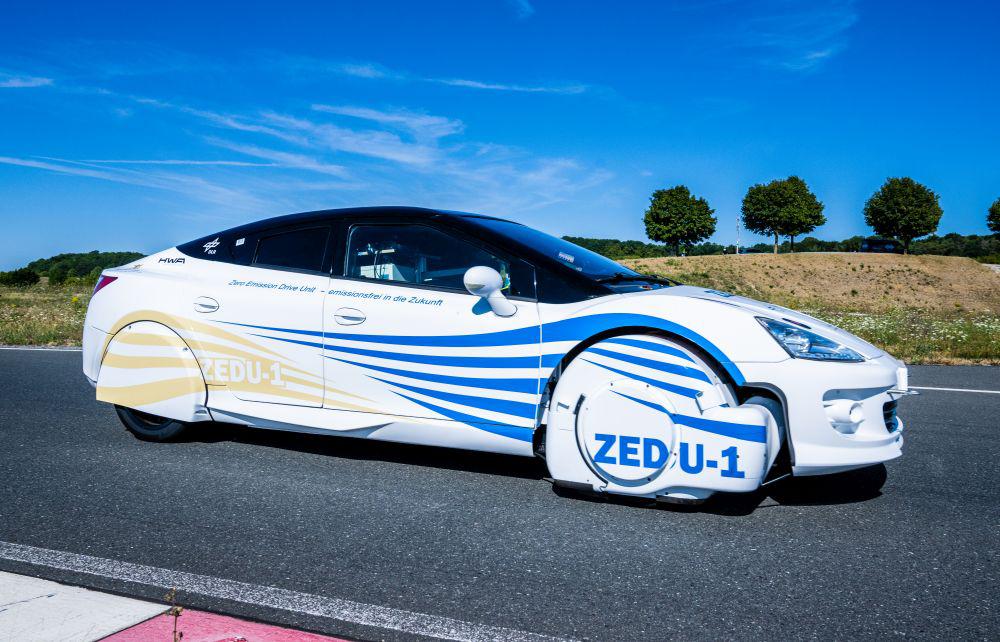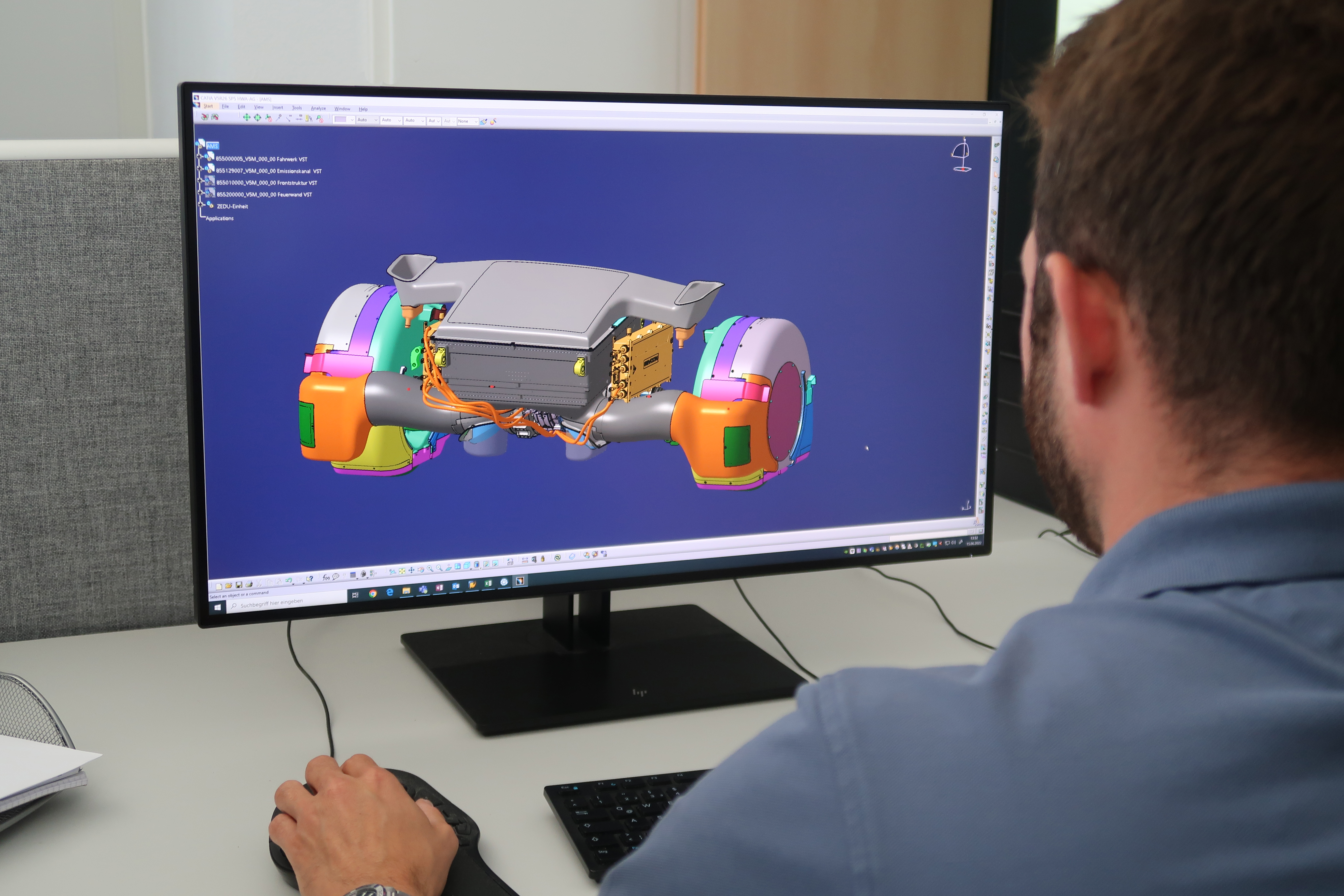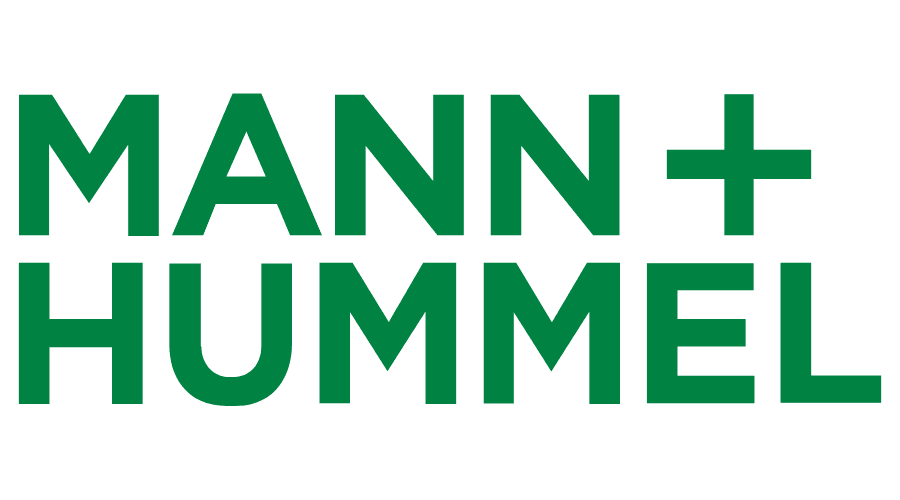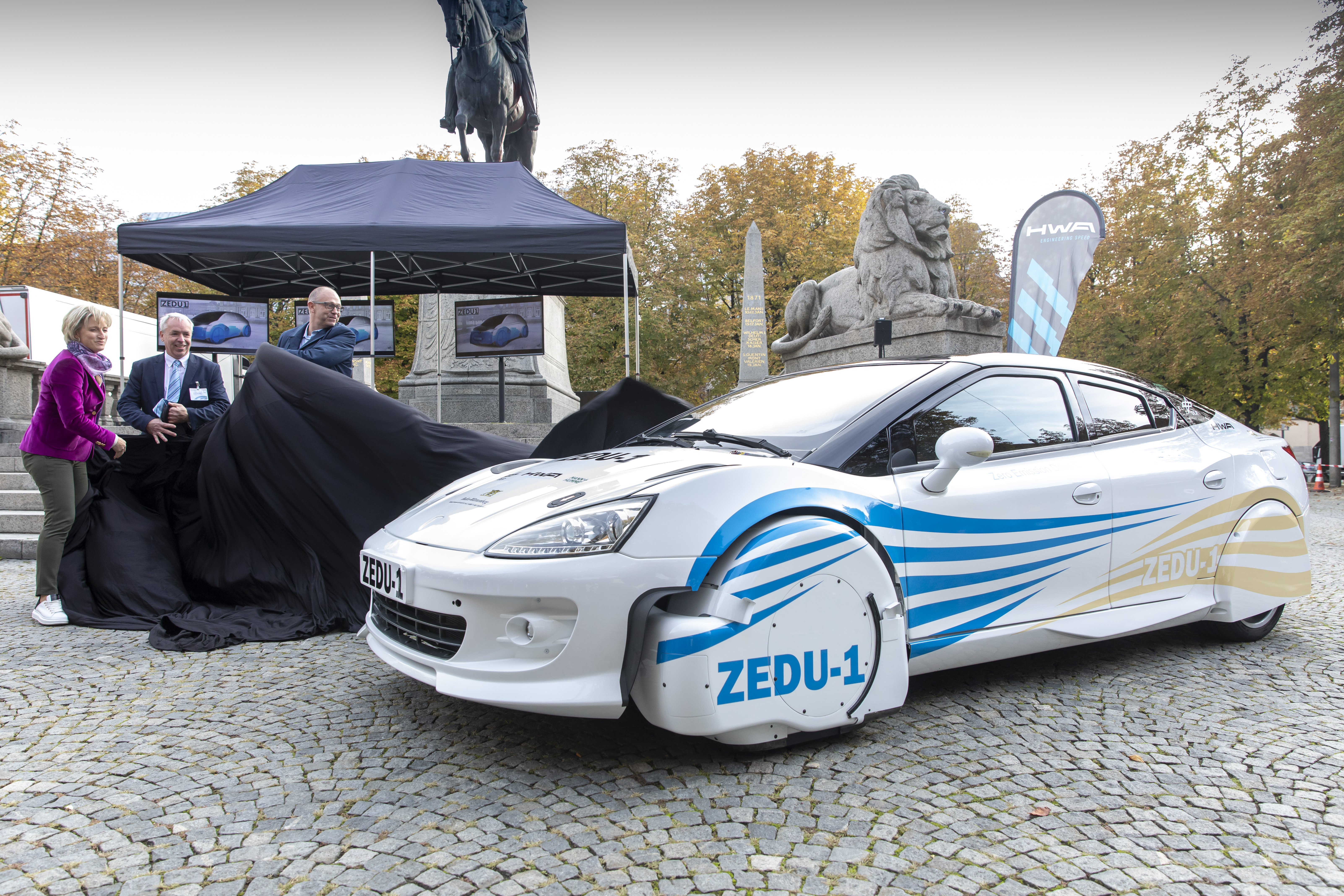
Mission
Along with exhaust gases, particulate matter and microplastic emissions are among the most important causes of mobility-related environmental pollution. Together with the companies HWA AG and Frenoza GmbH, the German Aerospace Center (DLR) in Stuttgart (Institute of Vehicle Concepts and Institute of Combustion Technology) has set itself the goal of developing a sustainable, innovative, cost-effective and everyday solution for reducing ultra-fine dust, fine dust and microplastic pollution caused by traffic and thus contributing to the realisation of emission-free mobility. ZEDU-1 is thus a contribution to achieving the emission values that will probably be necessary and required from 2025 in accordance with the Euro 7 standard.
The benefits at a glance
• Avoidance of particulate matter and microplastic emissions
• Development of innovative vehicle components
• Fine-dust-free brake system without loss of performance
• Reduction of tyre wear emissions to a minimum
• Energy management with high efficiency
• Reduction of environmental pollution caused by vehicle traffic
• Improvement of air quality
• Reduction of particulate matter, ultra fine dust and microplastics caused by traffic
• Contribution to the achievement of future necessary and required emission values
• Demonstration and metrological proof of the technology at Technology Readiness Level (TRL) 7
• Scaling series / transfer to passenger cars, commercial vehicles, rail, ...
• Strengthening Baden-Württemberg as a technology and business location
Background and research approach
The abrasion of tyres on the roads is responsible for more than a quarter of microplastic emissions worldwide. The small particles enter the sewage system when it rains and thus enter the water cycle. In Germany alone, this amounts to around 110,000 tonnes per year. Braking also produces abrasion from brake discs and brake pads. Brake abrasion is responsible for about one third of fine dust. More than 90 per cent of this consists of small particles (5,500-8,000 tonnes per year), so-called ultrafine particles (diameter < 100 nanometres). Ultra-fine particles are considered to be particularly problematic in terms of their environmental and health impact. Traffic-related abrasion thus contributes to poor air quality in cities as well as to the health burden caused by road traffic.
The project focuses on the development of drive-relevant components that have received little attention in this context so far, but are at the same time relevant per se as a source of emissions for any form of drive energy generation and operation: Brake unit abrasion and tyre abrasion. By reducing emissions from these sources, mobility can become almost completely emission-free in combination with energy from renewable sources and electric drives.
Together with the companies HWA, which was subcontracted to design the first generation Zero Emission Drive Unit (ZEDU-1) as a drive axle and to build the test vehicle, and Frenoza, which manufactures hard metal coatings for brakes, the successful implementation in the project took place.
Completely rethinking the brake system and wheel arch
Technologically, the project breaks new ground. The brake systemoves from the wheel carrier into the drive unit and is integrated there. In combination with specially tuned high-performance electronics, a power battery and a BBW system (Break by Wire), the braking energy can be almost completely recovered, i.e. recuperated, so that the mechanical braking component is reduced to a minimum. This makes it possible to build the drive unit very compactly, to integrate it into the transmission-brake unit and to completely eliminate brake abrasion emissions.
Different brake concepts were analysed and combined for this purpose. Two innovative and forward-looking systems were realised and investigated. On the one hand, a specially developed multi-disc brake: it works mechanically and is a closed system. The low brake abrasion is transported by the oil, which is also used for cooling and lubrication, into a filter and bound there. On the other hand, an induction brake: it works almost wear-free to a standstill and uses the force of magnetic fields to generate a braking effect.
A newly designed wheel arch reduces tyre abrasion emissions to a minimum. It is aerodynamically designed in such a way that the negative pressure created or generated while driving absorbs and collects the abrasion via a filter system.

Test bench and road: practical tests with demonstrator
The components developed in the project were realised and integrated into a specially built test and measurement vehicle. During test drives on the road, on a test site and on the DLR chassis dynamometer, a reference vehicle and the ZEDU-1 demonstrator were measured and metrological proof of the effectiveness of the developed components with regard to the emission of ultra-fine dust, particulate matter and microplastic abrasion was provided under realistic conditions. The focus of the characterisation is on the usability of the developed components in real operation and, in the analyses, the evaluation of the total amount of fine dust and ultra-fine dust emissions, the size distribution of the particles and their morphological determination.
.jpg)
Funding body
The Ministerium für Wirtschaft, Arbeit und Tourismus Baden-Württemberg is funding the project with a total of six million euros.

Project partners
DLR would like to thank the following for their support:

Frenoza GmbH

![]()
Premiere of the prototype on 28 September 2022 in Stuttgart

Further information about the premiere here.
